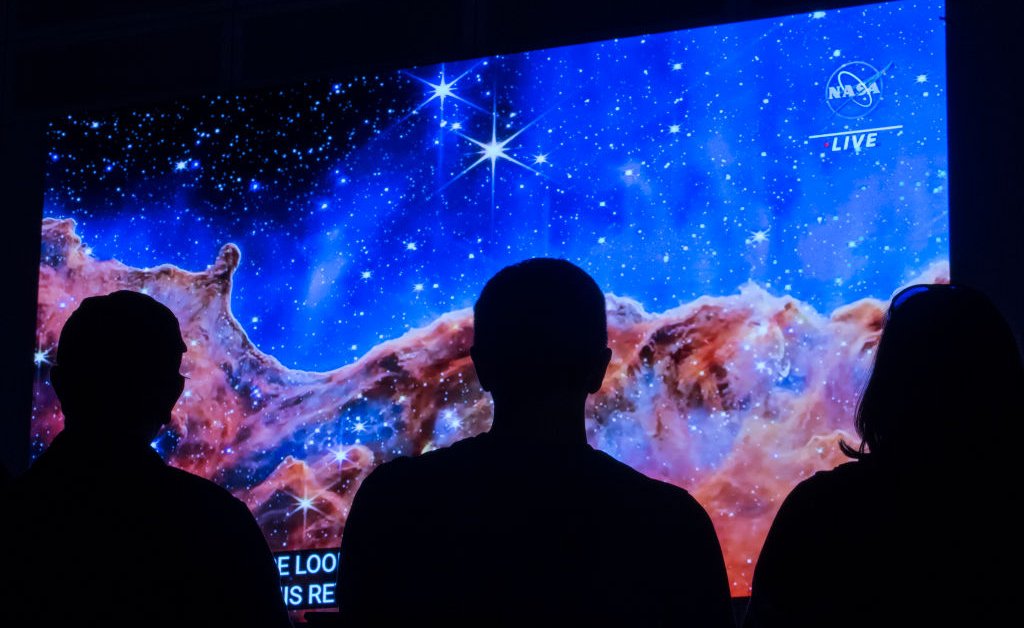
Tweek, NASA open For the first time, five images were taken by the James Webb Space Telescope. Together, these images – from the birth of stars to one of the deepest looks in the great distances of space – offer some of the most detailed glimpses into the beginnings of our universe we’ve ever seen.
Here’s what each photo shows and why it helps us better understand the space:
SMEX 0723
Webb cameras can look deep into space and far into the past. Webb has the ability to look at a distance of 13.6 billion light-years – which would be the farthest we’ve seen in space. This image of the galaxy cluster known as SMACS 0723 contains thousands of galaxies, some located 13.1 billion light-years away. (One light year is just under 6 trillion miles.) Because light takes so long to travel so far, we’re seeing galaxies not as they look today, but as they looked 13.1 billion years ago. Blue galaxies are the most mature galaxies, containing many stars and little dust. Redder galaxies contain more dust, from which stars are still forming.
Carina Nebula
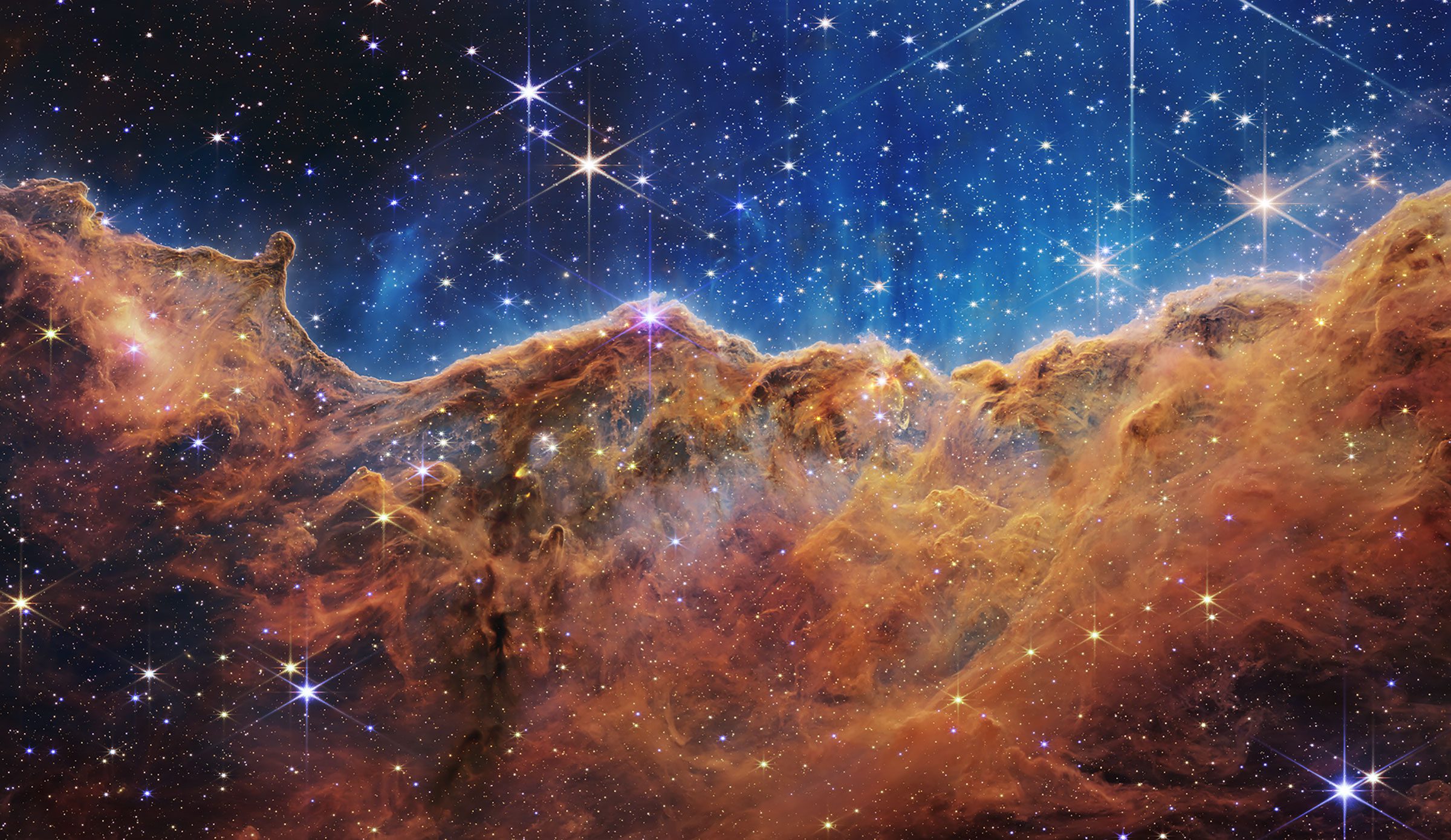
Stars, like the rest of us, are born, age, and die, and the Carina Nebula, located 7,600 light-years from Earth, is one of the greatest star nurseries in the universe. The cliff-like formations are vast peaks of dust and gas, some as high as seven light years. The Hubble Space Telescope has photographed Karina before, but never in the dazzling detail that Webb provided. Young stars are born in this turbulent region, fuse with the surrounding material. When stars are forming, they release massive amounts of energy which helps give the nebula’s overall shape. The red dots in the image are jets of energy emanating from the developing stars.
Stephan quintet
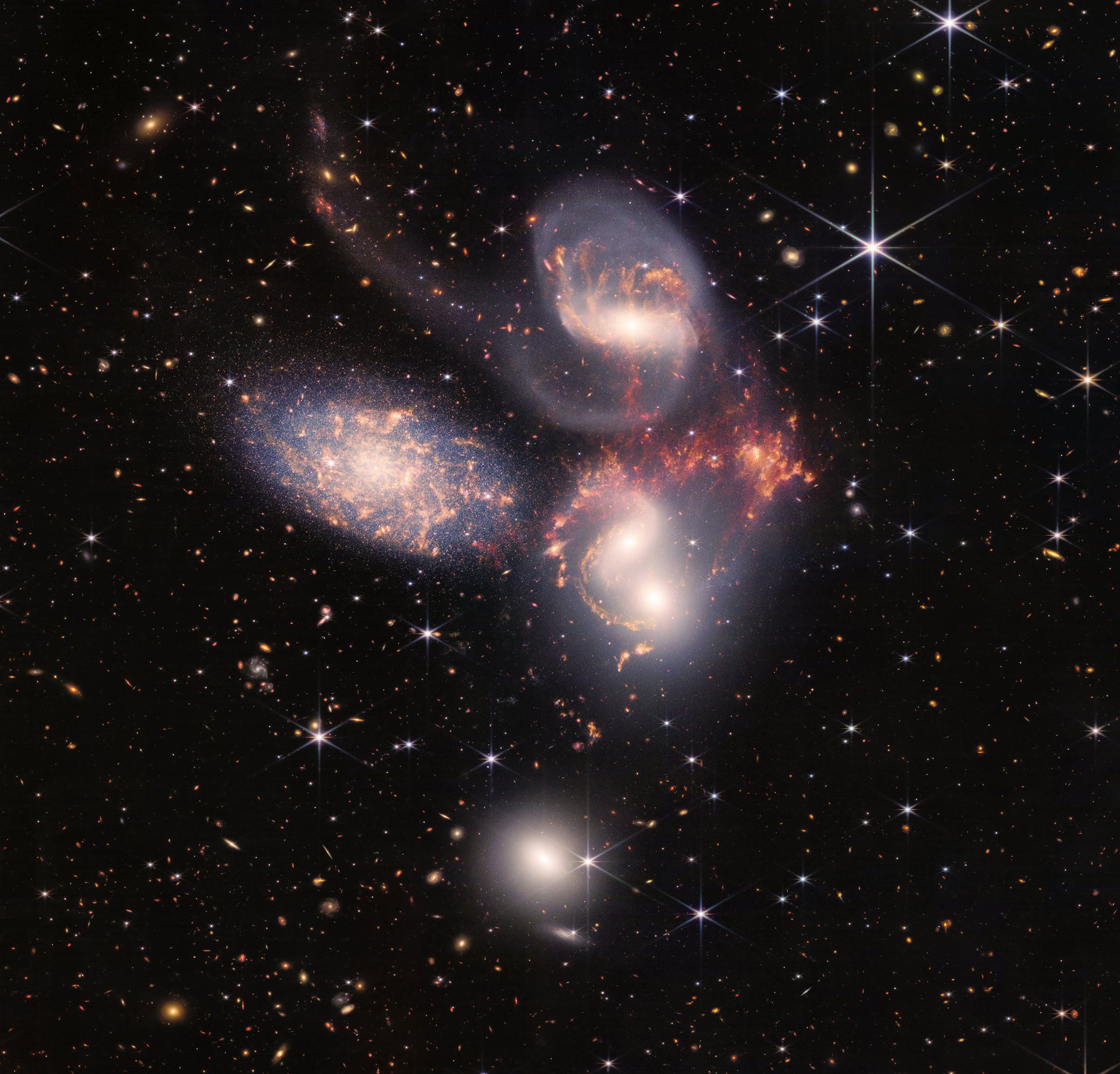
Webb snapped the greatest image ever taken of the Stephan’s Pentagram, a group of five galaxies, first seen by astronomers in 1877. The pentagram is actually more than a quadrant, with the leftmost galaxy in the foreground, 40 million light-years away. from Earth, while the other four are located 290 million light-years away. The four stacked galaxies interact closely, with clouds of dust and stars gravitationally moving from one to the other – mixed with their material. Clusters of young stars appear as bright sparkles in the image, and thousands of distant galaxies can be seen in the background.
Southern Ring Nebula
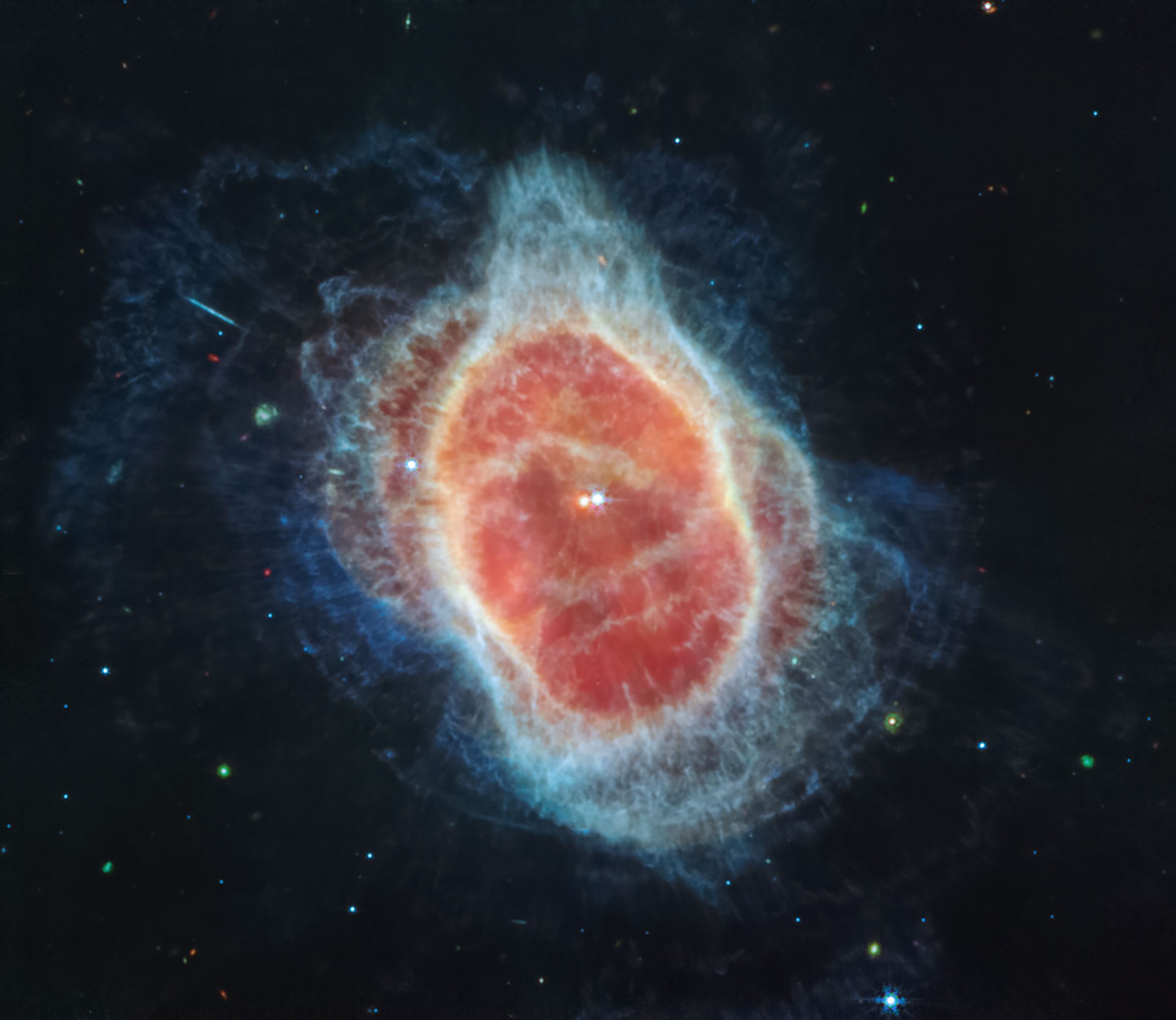
A dying star can be something surprisingly beautiful – and two stars like that can be even more faint. Webb snapped a picture of this pair of elderly stars orbiting each other about 2,500 light-years away from Earth. When stars enter the end of their lives, they release gas and dust that form the nebulae, or clouds, that surround them. Webb has the ability not only to photograph the Southern Ring Nebula, but also to analyze its chemistry, and understand more about how stars shed their matter as they die. The brighter star is smaller than the other and hasn’t released much material yet. As stars orbit each other, they actively move the gaseous nebula, giving it its distinctive shape.
WASP 96 b
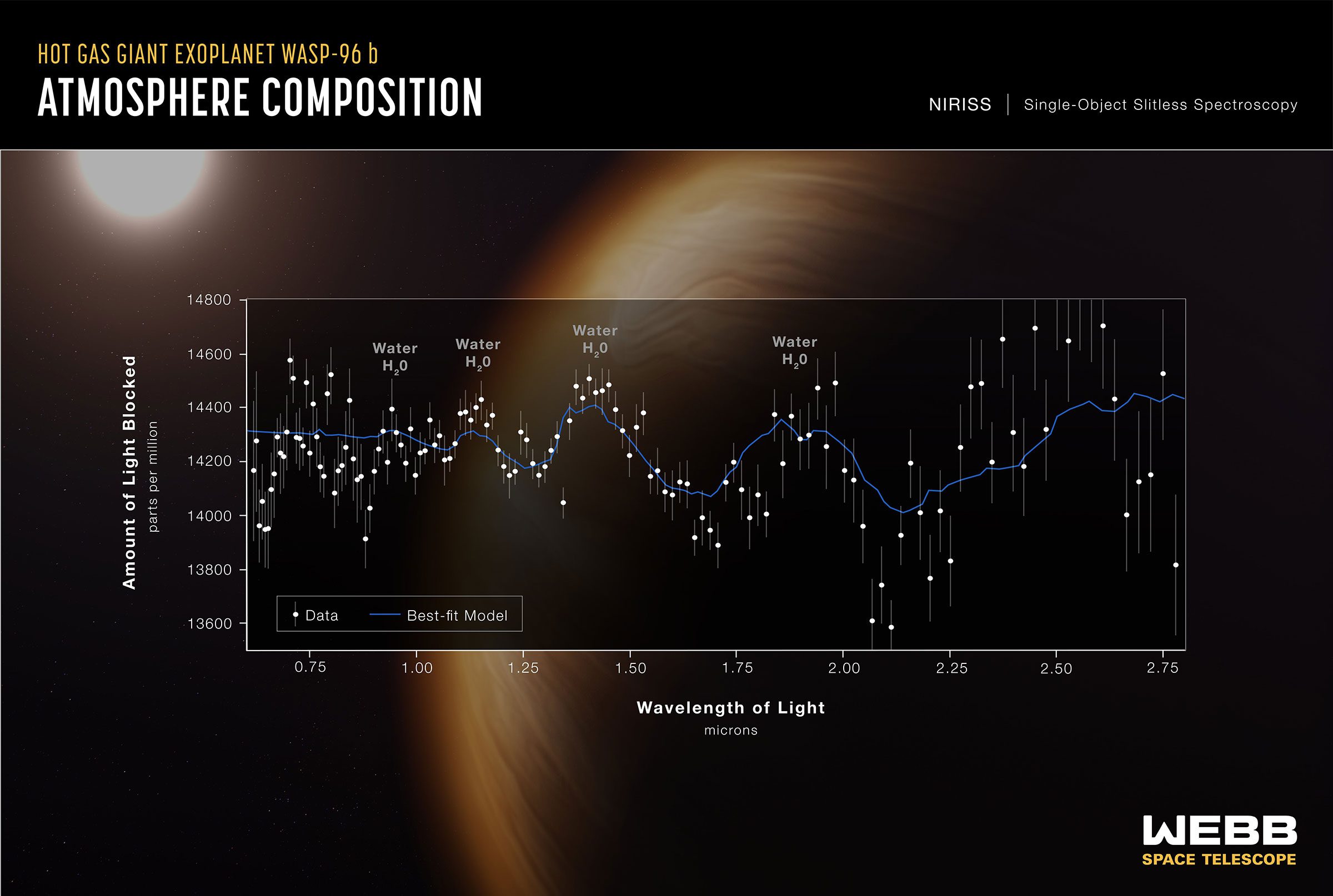
The science graph isn’t quite as stunning as the cosmic picture, but in this case the graph has a story to tell. Webb studies exoplanets – or planets orbiting other stars – especially the composition of their atmosphere. As the planet passes in front of its parent star, Webb can analyze starlight streaming through the atmosphere, looking for the chemical fingerprints of biology. In this diagram, Webb analyzed the atmosphere of WASP 96 B, a Jupiter-like planet located 1,150 light-years from Earth. Webb didn’t find biology, but as the graph shows, he found plenty of water in the planet’s clouds – and water is the main component of life as we know it.
More must-read stories from TIME

“Avid problem solver. Extreme social media junkie. Beer buff. Coffee guru. Internet geek. Travel ninja.”





More Stories
In Greece Porsche 911 50th Anniversary – How much does it cost?
PS Plus: With a free Harry Potter game, the new season begins on the service
Sony set to unveil PS5 Pro before holiday season – Playstation